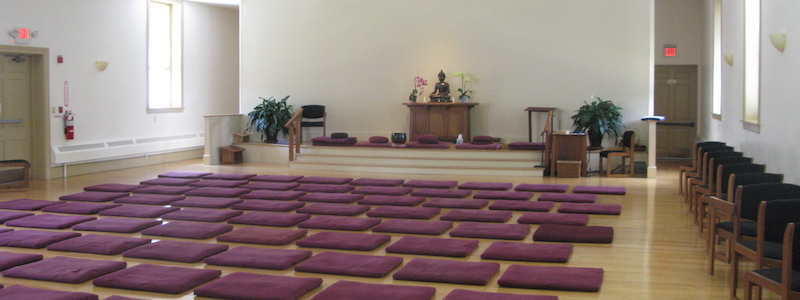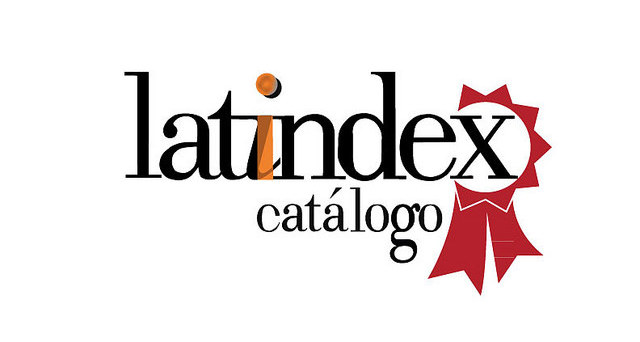Expelling the avatar
Controversies, Certification and Scientific Paradigm in the Emerging Field of Mindfulness (France, United States)
DOI:
https://doi.org/10.29340/en.v4n7.164Keywords:
mindfulness meditation, contemporary spirituality, scientific field, history of science, careAbstract
The display of mindful meditation in the most minute spaces of social life has led in recent years to dissident voices within the very world it builds. In the face of a drift in the market considered harmful, the producers of this field dictate norms to tell mindful meditation apart from their avatars. This article explores the frontiers of the emerging field of mindfulness by analyzing the controversies running through it. The competition between scientific and religious logics does not resist the multiple positioning of actors that transit between one context and the other, in a strategy of accumulation of plural legitimacies. When contemplative sciences demand the epistemological renovation of research on mindful meditation, they question the scientific paradigm of “Western science” and defend the dialogue between experimental sciences and contemplative practices.
Downloads
References
Altglas, Veronique y Matthew Wood (2019). Bringing Back the Social into the Sociology of Religion: Critical Approaches. Chicago: Haymarket Books. https://doi.org/10.1163/9789004368798 DOI: https://doi.org/10.1163/9789004368798
Bazin, Jean (2008). Des clous dans la Joconde: l’anthropologie autrement. Tolosa: Anacharsis.
Bitbol, Michel (2014). La conscience a-t-elle une origine? Des neurosciences à la pleine conscience, une nouvelle approche de l’esprit. París: Flammarion.
Bordes, Mariana. (2015). “Esto de alternativo no tiene nada. La construcción de la razonabilidad del uso de una medicina no convencional desde la perspectiva de sus usuarios en Buenos Aires, Argentina”. Physis: Revista de Saúde Coletiva, vol. 25, núm. 4, pp. 1229-1249. https://doi.org/10.1590/S0103-73312015000400010 DOI: https://doi.org/10.1590/S0103-73312015000400010
Bordes, Mariana y Mercedes Sáizar (2018). “De esto mejor ni hablar: omisiones y reformulaciones de lo sagrado por parte de terapeutas alternativos que trabajan en contextos hospitalarios”. Sociedad y Religión: vol. 28, núm. 50, pp. 161-182. Recuperado de http://www.ceil-conicet.gov.ar/ojs/index.php/sociedadyreligion/article/view/444/285, consultado el 11 de diciembre de 2020.
Bourdieu, Pierre (2007). Science de la science et réflexivité: Cours du Collège de France 2000-2001. París: Raisons d’agir.
Braun, Erik (2013). The Birth of Insight: Meditation, Modern Buddhism, and the Burmese Monk Ledi Sayadaw. Chicago: The University of Chicago Press. https://doi.org/10.7208/chicago/9780226000947.001.0001 DOI: https://doi.org/10.7208/chicago/9780226000947.001.0001
Cabane, Lydie y Sandrine Revet (2015). “La cause des catastrophes”. Politix, núm. 111, pp. 47–67. https://doi.org/10.3917/pox.111.0047 DOI: https://doi.org/10.3917/pox.111.0047
Chamak, Brigitte (2004). “Les sciences cognitives en France”. La Revue pour l’Histoire du cnrs, núm. 101. https://doi.org/10.4000/histoire-cnrs.583 DOI: https://doi.org/10.4000/histoire-cnrs.583
Champion, Françoise (2013). “Introduction. Des relations entre ‘religieux’ et ‘psy’”. Archives de Sciences Sociales des Religions, vol. 58, núm. 163, pp. 9–15. https://doi.org/10.4000/assr.25196 DOI: https://doi.org/10.4000/assr.25196
— (2008). Psychothérapie et Société. París: Armand Colin.
Cook, Joanna (2016). “Mindful in Westminster The Politics of Meditation and the Limits of Neoliberal Critique”. hau: Journal of Ethnographic Theory, vol. 6, núm. 1, pp. 141-161. https://doi.org/10.14318/hau6.1.011 DOI: https://doi.org/10.14318/hau6.1.011
Crane, Rebeca (2017). “Implementing Mindfulness in the Mainstream: Making the Path by Walking It”. Mindfulness, vol. 8, núm. 3, pp. 585-594. https://doi.org/10.1007/s12671-016-0632-7 DOI: https://doi.org/10.1007/s12671-016-0632-7
Crane, Rebecca et al. (2016). “What Defines Mindfulness-Based Programs? The Warp and the Weft”. Psychological Medicine, vol. 47, núm. 6, pp. 1-10. https://doi.org/10.1017/S0033291716003317 DOI: https://doi.org/10.1017/S0033291716003317
Cruz Esquivel, Juan y Rodrigo Toniol (2018). “La presencia de la religión en el espacio público latinoamericano. Apuntes para la discusión”. Social Compass, vol. 65, núm. 4, pp. 467-485. https://doi.org/10.1177/0037768618792811 DOI: https://doi.org/10.1177/0037768618792811
Dahl, Cortland. J., Antoine Lutz y Richard J. Davidson (2015). “Reconstructing and Deconstructing the Self: Cognitive Mechanisms in Meditation Practice”. Trends in Cognitive Sciences, vol. 19, núm. 9, pp. 515-523. https://doi.org/10.1016/j.tics.2015.07.001 DOI: https://doi.org/10.1016/j.tics.2015.07.001
Davidson, Richard. J. y Anne Harrington (ed.) (2002). Visions of Compassion: Western Scientists and Tibetan Buddhists Examine Human Nature. Nueva York: Oxford University Press. https://doi.org/10.1093/acprof:oso/9780195130430.001.0001 DOI: https://doi.org/10.1093/acprof:oso/9780195130430.001.0001
Davidson, Richard J. y Sona Dimidjian, (2015). “The Emergence of Mindfulness in Basic and Clinical Psychological Science” American Psychologist, vol. 70, núm. especial 7.
Dreyfus, Georges (2011). “Is Mindfulness Present-centred and Non-judgmental? A discussion of the cognitive dimensions of mindfulness”. Contemporary Buddhism, vol. 12, núm. 1, pp. 41-54. https://doi.org/10.1080/14639947.2011.564815 DOI: https://doi.org/10.1080/14639947.2011.564815
Drougge, Per (2016). “Notes Toward a Coming Backlash”, en Ronald E. Purser, David Forbes y Adam Burke (ed.), Handbook of Mindfulness. Nueva York: Springer, pp. 167-179. https://doi.org/10.1007/978-3-319-44019-4_12 DOI: https://doi.org/10.1007/978-3-319-44019-4_12
Dunne, John. D. (2015). “Buddhist Styles of Mindfulness: A Heuristic Approach”. Handbook of Mindfulness and Self-Regulation. Nueva York: Springer, pp. 251-270. https://doi.org/10.1007/978-1-4939-2263-5_18 DOI: https://doi.org/10.1007/978-1-4939-2263-5_18
Durisch, Nicole, I. Rossi y J. Stolz (ed.) (2007). Quêtes de santé: Entre soins médicaux et guérisons spirituelles. Ginebra: Labor et Fides.
Ehrenberg, Alain (2008). “Le cerveau social”. Esprit, vol. enero, núm. 1, pp. 79-103. https://doi.org/10.3917/espri.0801.0079 DOI: https://doi.org/10.3917/espri.0801.0079
Fadlon, Judith (2017). “Meridians, Chakras and Psycho-Neuro-Immunology: The Dematerializing Body and the Domestication of Alternative Medicine”. Body & Society, vol. 10, núm. 4, pp. 69-86. https://doi.org/10.1177/1357034X04047856 DOI: https://doi.org/10.1177/1357034X04047856
Feuerhahn, Wolf y Rafael Mandressi (2011). “Les “neurosciences sociales”: Historicité d’un programme”. Revue d’Histoire des Sciences Humaines, vol .2, núm. 25, pp. 3-6. https://doi.org/10.3917/rhsh.025.0003 DOI: https://doi.org/10.3917/rhsh.025.0003
Feldman, Christina y Willem Kuyken (2019). Mindfulness: Ancient Wisdom Meets Modern Psychology. Nueva York : The Guilford Press.
Garnoussi, Nadia (2013). “Des glissements du spirituel au ‘psy’. Entre quête de sens et quête de santé dans le contexte de la sécularisation avancée”. Archives de sciences sociales des religions, núm. 163, pp. 63-82. https://doi.org/10.4000/assr.25233 DOI: https://doi.org/10.4000/assr.25233
— (2011). “Le Mindfulness ou la méditation pour la guérison et la croissance personnelle: des bricolages psychospirituels dans la médecine mentale”. Sociologie, vol. 2, núm. 3, pp. 259-275. https://doi.org/10.3917/socio.023.0259 DOI: https://doi.org/10.3917/socio.023.0259
Gieryn, Thomas F. (1983). “Boundary-Work and the Demarcation of Science from Non-Science: Strains and Interests in Professional Ideologies of Scientists”. American Sociological Review, vol. 48, núm. 6, pp. 781-795.https://doi.org/10.2307/2095325 DOI: https://doi.org/10.2307/2095325
Gobin, Emma y Maxime Vanhoenacker (2016). “Innovation rituelle et réflexivité. Retours aux rituels: une introduction”. Ethnographiques.org, núm. 33. Recuperado de http://www.ethnographiques.org/2016/Gobin-Vanhoenacker, consultado el 11 de diciembre de 2020.
Eisenstadt, Shmuel (2000). Multiple Modernities. New Jersey: Transaction Pub.
Kabat-Zinn, Jon (2013). Full Catastrophe Living: Using the Wisdom of your Body and Mind to Face Stress, Pain, and Illness. Nueva York: Bantam Books.
Kirmayer, Laurence J. (2015). “Mindfulness in cultural context”. Transcultural Psychiatry, vol. 52, núm. 4, pp. 447–469. https://doi.org/10.1177/1363461515598949 DOI: https://doi.org/10.1177/1363461515598949
Kripal, Jeffrey. J. (2008). Esalen: America and the Religion of No Religion. Chicago: University of Chicago Press. https://doi.org/10.7208/chicago/9780226453712.001.0001 DOI: https://doi.org/10.7208/chicago/9780226453712.001.0001
Liénard, Yasmine (2017, 9 de octubre). “Des questionnements sur la pleine conscience”. Pleine Conscience. Recuperado de https://www.pleine-conscience.fr/2017/10/09/questionnements-pleine-conscience/, consultado el 10 de diciembre de 2020.
Luca, Nathalie et al. (2019). “Introduction. Les techniques du croire et du faire-croire”. Archives de sciences sociales des religions, núm. 187, pp. 11-25. https://doi.org/10.4000/assr.45885 DOI: https://doi.org/10.4000/assr.45885
Magnani, José G. (1999). “O circuito neo-esotérico na cidade de São Paulo”, en María Carozzi (org.), A Nova Era no Mercosur. Petrópolis: Vozes, pp. 27-46.
Mancini, Silvia (2006). La fabrication du psychisme: pratiques rituelles au carrefour des sciences humaines et des sciences de la vie. París: La Découverte. DOI: https://doi.org/10.3917/dec.manci.2006.01
McMahan, David (2017). “Buddhism, Meditation, and Global Secularisms”. Journal of Global Buddhism, vol. 18, pp. 112-128.
— (2011). “Buddhism as the “Religion of Science”: From Colonial Ceylon to the Laboratories of Harvard”, en Jim R. Lewis y Olav Hammer (ed.), Handbook of Religion and the Authority of Science, pp. 115-140. https://doi.org/10.1163/ej.9789004187917.i-924.38 DOI: https://doi.org/10.1163/ej.9789004187917.i-924.38
McMahan, David. L. y Erik Braun (ed.) (2017). Meditation, Buddhism, and Science. Nueva York: Oxford University Press. https://doi.org/10.1093/oso/9780190495794.001.0001 DOI: https://doi.org/10.1093/oso/9780190495794.001.0001
Monteiro, Lynette M., Frank Musten y Jane Compson (2015). “Traditional and Contemporary Mindfulness: Finding the Middle Path in the Tangle of Concerns”. Mindfulness, vol.6, núm.1, pp. 1-13. https://doi.org/10.1007/s12671-014-0301-7 DOI: https://doi.org/10.1007/s12671-014-0301-7
Niraka (2019, 28 de octubre). Mindfulness: una mirada crítica, desde la ciencia – Clifford Saron. Recuperado de https://youtu.be/FezZhHjcCl4, consultado el 10 de diciembre de 2020.
The Onion (2017,13 de octubre). “Historians Discover Meditation Spread from Ancient China by Annoying Monk Who Wouldn’t Shut Up About How It Changed His Life”. The Oninon. Recuperado de https://www.theonion.com/historians-discover-meditation-spread-from-ancient-chin-1819580402, consultado el 11 de diciembre de 2020.
Orain-Pelissolo, Stephany (2018). Étreindre votre douleur, éteindre votre souffrance: la thérapie basée sur la pleine conscience. París: Odile Jacob.
Pestre, Dominique (2007). “L’analyse de controverses dans l’étude des sciences depuis trente ans”. Mille neuf cents. Revue d’histoire intellectuelle, vol. 1, núm. 25, pp. 29–43. https://doi.org/10.3917/mnc.025.0029 DOI: https://doi.org/10.3917/mnc.025.0029
Petitmengin, Claire et al. (2017). “What Is It Like to Meditate?: Methods and Issues for a Micro-phenomenological Description of Meditative Experience”. Journal of Consciousness Studies, vol. 24, núm. 5–6, pp. 170-198.
Purser, Ronald. E., David Forbes y Adam Burke (2016). Handbook of Mindfulness. Nueva York: Springer. https://doi.org/10.1007/978-3-319-44019-4 DOI: https://doi.org/10.1007/978-3-319-44019-4
Quenault, Béatrice (2015). “De Hyōgo à Sendai, la résilience comme impératif d’adaptation aux risques de catastrophe: Nouvelle valeur universelle ou gouvernement par la catastrophe ?” Développement Durable et Territoires, vol. 6, núm. 3. https://doi.org/10.4000/developpementdurable.11010 DOI: https://doi.org/10.4000/developpementdurable.11010
Rosenbaum, Robert (2016). “Mindfulness Myths. Fantasies and Facts”, en Robert Rosenbaum y Barry Magid, What’s Wrong with Mindfulness (and What Isn’t): Zen perspectives. Somerville: Wisdom, pp. 53-68.
— y Barry Magid (eds.) (2016). What’s Wrong with Mindfulness (and What Isn’t): Zen perspectives. Somerville: Wisdom.
Rosenkranz, Melissa (2015, 21 de mayo). “After Active Controls in Meditation Studies: Where’s the Beef?”, en Perspectives on Mindfulness: the Complex Role of Scientific Research. Conferencia realizada en uc Davis Center for Mind and Brain, California, Estados Unidos.
Santos, Boaventura de Sousa (2011). “Épistemologies du Sud”. Études Rurales, núm. 187, pp. 21-50. https://doi.org/10.4000/etudesrurales.9351 DOI: https://doi.org/10.4000/etudesrurales.9351
Segal, Zindel V., John D. Teasdale y Mark G. Williams (2016). La thérapie cognitive basée sur la pleine conscience pour la dépression: Prévenir la rechute. París: De Boeck Supérieur.
Sharf, Robert. H. (2015). “Is Mindfulness Buddhist? (And Why it Matters)”. Transcultural Psychiatry, vol. 52, núm. 4, pp. 470–484. https://doi.org/10.1177/1363461514557561 DOI: https://doi.org/10.1177/1363461514557561
Stanley, Steven, Ronald. E. Purser y Nirbhay Singh (2018). Handbook of Ethical Foundations of Mindfulness. Nueva York: Springer. https://doi.org/10.1007/978-3-319-76538-9 DOI: https://doi.org/10.1007/978-3-319-76538-9_1
Spirit Rock (s.f.). “Community Dharma Leaders Program (CDL6)”. Spirit Rock Insight Meditation Center. Recuperado de https://www.spiritrock.org/community-dharma-leaders, consultado el 10 de diciembre de 2020.
Thompson, Evan (2017). “Looping Effects and the Cognitive Science of Mindfulness Meditation”, en David. L. McMahan y Erik Braun (ed.), Meditation, Buddhism, and science. Nueva York: Oxford University Press, pp. 47-61. https://doi.org/10.1093/oso/9780190495794.003.0003 DOI: https://doi.org/10.1093/oso/9780190495794.003.0003
Torre, Renée de la, Cristina Guttiérez Zúñiga y Nahayeilli Juárez Huet (ed.) (2016). New Age in Latin America: Popular Variations and Ethnic Appropriation. Leiden y Boston: Brill.
Tresch, John (2004). “La science mise a nu (par ses ethnographes, même)”. Critique : revue générale des publications françaises et étrangères., núm.680, pp. 52-65. https://doi.org/10.3917/criti.680.0052 DOI: https://doi.org/10.3917/criti.680.0052
Van Dam, Nicholas. T. et al. (2018). “Mind the Hype: A Critical Evaluation and Prescriptive Agenda for Research on Mindfulness and Meditation”. Perspectives on Psychological Science, vol. 13, núm. 1, pp. 36-61. https://doi.org/10.1177/1745691617709589 DOI: https://doi.org/10.1177/1745691617709589
Van Gordon, William, Edo Shonin y Mark. D. Griffiths (2015). “Towards a Second Generation of Mindfulness-Based Interventions”. Australian & New Zealand Journal of Psychiatry, vol. 49, núm. 7, pp. 591-592. https://doi.org/10.1177/0004867415577437 DOI: https://doi.org/10.1177/0004867415577437
Vidal, Fernando (2009). “Brainhood, anthropological figure of modernity”. History of the Human Sciences, vol. 22, núm. 1, pp. 5-36. https://doi.org/10.1177/0952695108099133 DOI: https://doi.org/10.1177/0952695108099133
Viotti, Nicolás (2011). “La literatura sobre las nuevas religiosidades en las clases medias urbanas. Una mirada desde Argentina”. Revista Cultura y Religión, vol. 5, núm. 1, pp. 4-17. Recuperado de https://dialnet.unirioja.es/servlet/articulo?codigo=3713771, consultado el 11 de diciembre de 2020.
Zeller, Benjamin. E. (2011). “New Religious Movements and Science”. Nova Religio, vol. 14, núm. 4, pp. 4-10. https://doi.org/10.1525/nr.2011.14.4.4 DOI: https://doi.org/10.1525/nr.2011.14.4.4

Published
Issue
Section
License
Copyright (c) 2021 Encartes

This work is licensed under a Creative Commons Attribution-NonCommercial 4.0 International License.
Aviso de derechos de autor
- Los autores/as conservan los derechos de autor y ceden a la revista el derecho a la primera publicación con el trabajo registrado con la licencia de atribución Creative Commons, que permite a terceros utilizar lo publicado siempre que mencionen la autoría del trabajo y a la primera publicación en esta revista
- Los autores/as pueden realizar otros acuerdos contractuales independientes y adicionales para la distribución no exclusiva de la versión del artículo publicado en esta revista (por ej. Incluirlo en un repositorio institucional o publicarlo en un libro) siempre que indiquen claramente que el trabajo se publicó por primera vez en esta revista.
El material puede ser copiado, distribuido, comunicado, ejecutado públicamente. Se pueden hacer obras derivadas de él. No se puede utilizar para fines comerciales. Se debe reconocer y citar la obra de la forma en que tú especifiques.









